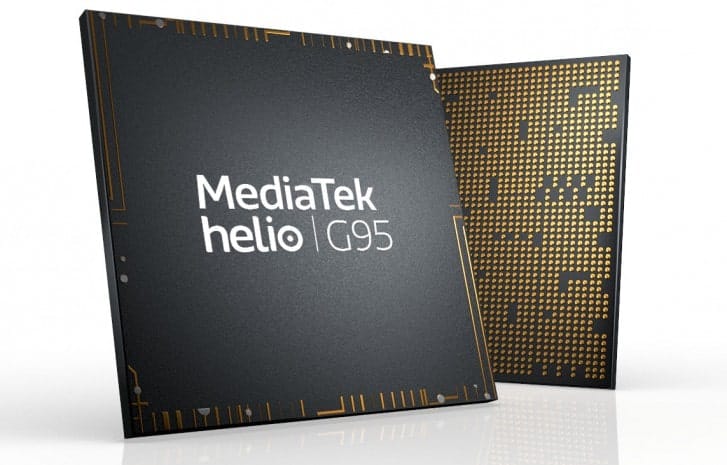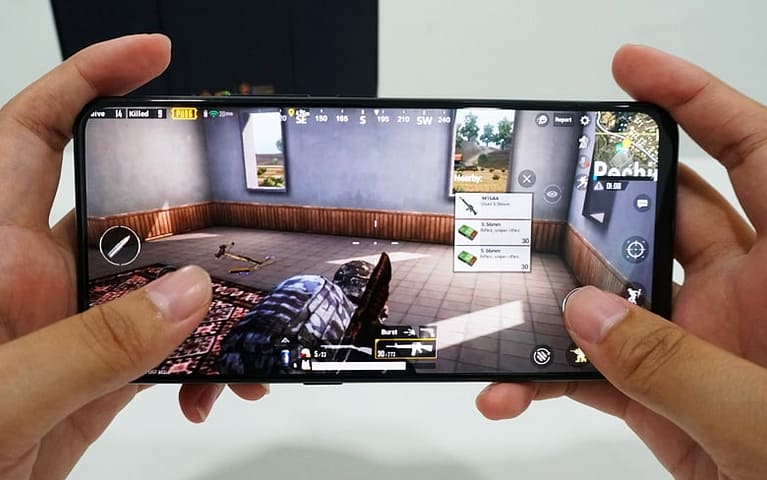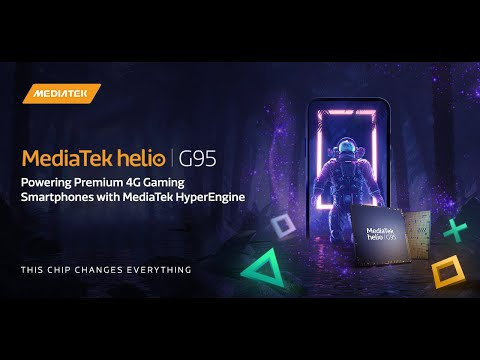MediaTek announces MediaTek Helio G95 Mobile processor. The new Helio G95 is designed to deliver increased performance across the board for superior gameplay and insanely fast MediaTek Helio G95 gaming experiences with ultra-intuitive AI.
Qualcomm has unveiled the Snapdragon 732 G SoC, featuring a few upgrades over a decent predecessor. Qualcomm Snapdragon 732 G is expected to fuel a few mid-range smartphones. Not to be left behind, MediaTek has now released the new Helio G95 SoC, which also builds on its successful predecessor.

Features of the MediaTek Helio G95
The new MediaTek Helio G95 has been developed for premium 4 G gaming smartphones. With an updated feature set at your fingertips, the G95 succeeds in all fronts. Here’s the perfect list if you’re hunting for an upgrade.
Maximize Your Gaming
The MediaTek Helio G95 features two premium ‘large’ Arm Cortex-A76 cores in its octa-core Chipset with clock speeds that eclipse 2GHz. Its quad-core Arm Mali-G76 graphics can also be boosted to a maximum of 900MHz. This marks a 5% improvement in the Antutu CPU benchmark performance and up to 8 % in the Manhattan 3.0 GPU benchmark relative to the last generation G series.
Beyond the chip, MediaTek’s HyperEngine gaming technology optimizes the entire smartphone using four “engines” that cover networking, swift display and touchscreen response, power management, and image quality.
Coupled with ultra-fast UFS storage and 2133MHz (4266MT / s effective) LPDDR4X memory, G95-powered smartphones are always responsive – well beyond gaming – whether you’re streaming content, communicating with friends, working on the go, or snapping pictures.
AI Super-Resolution for Video Streams & Tele-Conferencing
This is a new feature introduced by the MediaTek Helio G95. App designers can harness the power of the MediaTek AI Processing Unit (APU) to exploit AI High-Resolution technology for streaming video and video conferencing.
This allows users to stream video at a resolution of just 360p, saving significant cellular network bandwidth. Using the APU, the video is then intelligently scaled to HD resolution (720p) in real-time without any significant change in quality. This will extend the monthly bandwidth cap, supporting people who are working or learning from home and on camera every day.
Enhancing the Display & Video Playback
MediaTek MiraVision intelligently combines a wide variety of display factors depending on what is being watched to offer cinema-grade multimedia experiences to the small screen. MediaTek MiraVision provides two technologies for HDR video content encoded with HDR10 and HDR10 +:
The content of HDR10 uses ‘original’ metadata. MediaTek MiraVision analyses the video stream and converts it to real-time dynamic metadata, enhancing the quality to approach HDR10 + native.
MediaTek MiraVision can also update to the new HDR10 + content. It performs a real-time ‘local tone mapping’ subframe, which continues to retain more clarity and contrast in each shot, enhancing picture quality.
Dual ‘Wake-up Word’ Support
As many virtual assistants like Google Assistant and Amazon Alexa-promote our everyday lives in a variety of ways, the G95 can listen to independent trigger words to wake up either of them. This is achieved with specially built in-chip technology, which helps by saving power and increasing battery life.
Reliably Fast 4G LTE connections
Cat-12 4 G LTE can offer incredible download speeds of up to 600Mbit / s, but it’s also advanced networking features such as 3x CA, 4×4 MIMO antenna, 256QAM, global eMBMS, and HPUE that provide quicker, more powerful, and more stable connections.
MediaTek brings its own TAS 2.0 antenna switching technology to the mix, which automatically tracks and adjusts the antennas used around the device to ensure the optimal communication with the lowest power consumption, extending the battery life.
Dual 4G SIM
Dual 4 G SIM is a key feature in many markets. It offers VoLTE and 4 G data connectivity from either connection, providing a seamless user experience regardless of the SIM you choose. VoLTE and ViLTE services are preferred over conventional calls because they offer superior call quality and live streaming access, shorter call setup time, and significantly improved sound quality.
Up to 64MP AI-Camera
G95-powered smartphones can encompass a variety of multi-camera designs with a variety of lenses and sensor choices, including up to large 64MP cameras, so you can snap extremely detailed images, or use advanced multi-frame noise reduction (MFNR) quad-pixel technology to take night shots with incredible low-light quality.
The built-in hardware depth engine offers seamless, real-time bokeh previews for high-quality portraits. Video can be shot using high-performance HEVC and the G95 also supports high frame rate up to an ultra-fast 240 FPS.
MediaTek Helio G95 Specification
| Specifications | MediaTek Helio G95 | |
|---|---|---|
| CPU |
| |
| GPU | ARM Mali-G76 3EEMC4 up to 900MHz | |
| Camera |
| |
| AI | 2x MediaTek APU up to 750MHz | |
| Voice Wakeup | ||
| LPDDR4x up to 10GB, 2133MHz (4,266 GT/s effective) | ||
| Storage | UFS 2.1; eMMC 5.1 | |
| Display | Up to 2520 x 1080, Full HD+, 21:9 | |
| Display Refresh Rate | Up to 90Hz | |
| Modem | 4G LTE Cat-12 (DL) / Cat-13 (UL) (FDD/TDD), 4×4 MIMO, 3CA, 256QAM, HUPE, IMS (VoLTE/ViLTE/WFC), eMBMS, Dual 4G VoLTE (DSDS), Global Bands, TAS 2.0 |

Is Mediatek Helio G95 a revolutionary chip? or an extremely hyped marketing gimmick!
The new MediaTek Helio G95 SoC is an enhancement of the same features as that of the previous Helio G90 and Helio G90 T SoC from MediaTek. Surprisingly, it’s hard to figure out what’s new about this SoC, and from the look of it, it’s just a slight improvement.
The only change we could see over the Helio G90 T is that the Helio G95 comes with a higher boost speed on the GPU, with the ARM Mali-G76 MC4 now being able to function at up to 900MHz compared to the 800MHz ceiling from the predecessor.
As a result, MediaTek claims “up to 8%” improvement in GPU benchmark scores from the G90T. There is also a report of “up to 5%” improvement in CPU test performance, but we did not find a consequent shift in the requirements that would justify how this improvement materialized.
With all this being said, the MediaTek Helio G95 may seem daunting. But from personal experience using the Helio G90 T smartphone for a while to replace the flagships that I currently use, the predecessor was a very good SoC in terms of performance. With the G95, MediaTek doesn’t want to fix what isn’t broken! it’s a healthy gamble on a successful SoC.
To bind it together, the MediaTek Helio G95 is built on a 12 nm design, with 2x Cortex-A76 cores clocked at @2.05Ghz and 6x Cortex-A55 cores. This is complemented by the Mali ARM G76 3EEMC4 GPU. Other highlights of the G95 include up to 10 GB of LPDDR4X RAM clocked up to 2133MHz.
The SoC also supports up to 64MP single camera or 24MP plus 16MP dual-camera setups, with pixel-binding support and 240fps slo-mo mode, as well as AI facial recognition.
The chip also incorporates dual word wake-up support, enabling phones to develop support for listening to more than one-word prompt concurrently. The series supports the Cat-12 4 G LTE modem with 3X CA and 4X4 MIMO hardware for networking.
The Helio G95 also continues to use the MediaTek HyperEngine game platform, providing gaming-centric features such as a networking engine, a quick response engine, a power management system, a picture quality system, a call, and data concurrency, and a dual Wi-Fi link.
This sums up our thoughts on Mediatek Helios G95, if you still face any issues or any queries related to this, feel free to hit us in the comment section.

